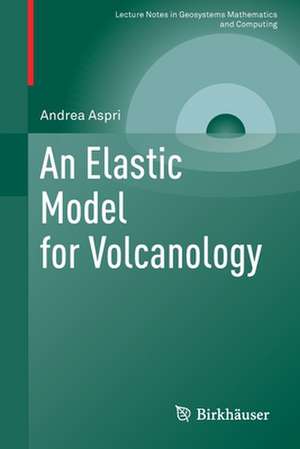An Elastic Model for Volcanology: Lecture Notes in Geosystems Mathematics and Computing
Autor Andrea Asprien Limba Engleză Paperback – 9 noi 2019
Preț: 379.09 lei
Nou
Puncte Express: 569
Preț estimativ în valută:
72.56€ • 78.84$ • 60.99£
72.56€ • 78.84$ • 60.99£
Carte tipărită la comandă
Livrare economică 21 aprilie-05 mai
Preluare comenzi: 021 569.72.76
Specificații
ISBN-13: 9783030314743
ISBN-10: 303031474X
Pagini: 126
Ilustrații: X, 126 p. 7 illus. in color.
Dimensiuni: 155 x 235 mm
Greutate: 0.2 kg
Ediția:1st ed. 2019
Editura: Springer International Publishing
Colecția Birkhäuser
Seria Lecture Notes in Geosystems Mathematics and Computing
Locul publicării:Cham, Switzerland
ISBN-10: 303031474X
Pagini: 126
Ilustrații: X, 126 p. 7 illus. in color.
Dimensiuni: 155 x 235 mm
Greutate: 0.2 kg
Ediția:1st ed. 2019
Editura: Springer International Publishing
Colecția Birkhäuser
Seria Lecture Notes in Geosystems Mathematics and Computing
Locul publicării:Cham, Switzerland
Cuprins
Preface.- From the physical to the mathematical model.- A scalar model in the half-space.- Analysis of the elastic model.- Index.
Textul de pe ultima copertă
This monograph presents a rigorous mathematical framework for a linear elastic model arising from volcanology that explains deformation effects generated by inflating or deflating magma chambers in the Earth’s interior. From a mathematical perspective, these modeling assumptions manifest as a boundary value problem that has long been known by researchers in volcanology, but has not, until now, been given a thorough mathematical treatment. This mathematical study gives an explicit formula for the solution of the boundary value problem which generalizes the few well-known, explicit solutions found in geophysics literature. Using two distinct analytical approaches—one involving weighted Sobolev spaces, and the other using single and double layer potentials—the well-posedness of the elastic model is proven. An Elastic Model for Volcanology will be of particular interest to mathematicians researching inverse problems, as well as geophysicists studying volcanology.
Caracteristici
Presents a much-needed mathematical treatment of the linear elastic model to explain deformation effects generated by inflating or deflating magma chambers Proves the well-posedness of the linear elastic model using two distinct analytical approaches Generalizes existing mathematical models of magma chambers to cavities of generic shape










